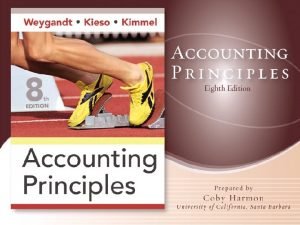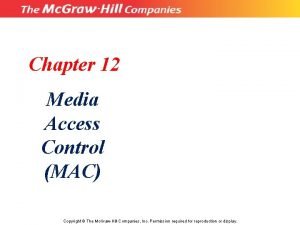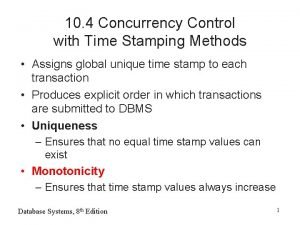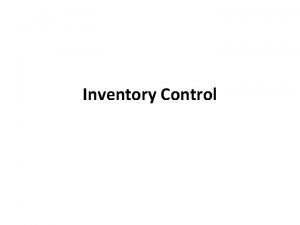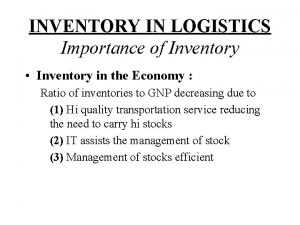6 01 Inventory Control Methods Understand Inventory Control










- Slides: 10

6. 01 Inventory Control Methods Understand Inventory Control Methods Power. Point #3

Inventory Control Methods � Help businesses account for Ending Inventory and help determine Cost of Goods Sold � If Inventory consists of large, identifiable items, it is easy to compute the above. � If Inventory consists of lots of items that are not specifically identifiable, such as in a hardware store, it is not very easy to compute the above. � Businesses use Inventory Control Methods to help with these computations.

Assumptions � Because of fluctuations in purchase price of the inventory, businesses must make assumptions about which items have sold and which remain. � These ◦ ◦ Methods are: Specific Identification First In First Out Last In Last Out Weighted Average

Specific Identification � The actual cost of each item is assigned to the item. � Firms that sell big ticket items such as cars, appliances, or furniture may use specific identification. � This method is rarely used in practice today.

First In First Out � Based on the assumption that the first items purchased are the first items sold � Assumes the newest acquired items remain in inventory � During periods of inflation, FIFO will result in the lowest Cost of Goods Sold and the highest income.

Last In First Out � Based on the assumption that the last items purchased are the first items sold � Assumes the oldest acquired items remain in inventory. � During periods of inflation, the use of LIFO results in the highest Cost of Goods Sold and the lowest income.

Weighted Average � Assigns an average cost to each unit in inventory � This average unit price is calculated prior to each sale. � This method results in a Cost of Goods Sold amount that is between the FIFO and LIFO amounts.

Lower of Cost or Market � Lower of Cost or Market is not an inventory method, it is an application of the GAAP principle of Conservatism. � Per GAAP, inventory is valued at historical cost. � Sometimes, the original cost of the ending inventory is more than its replacement cost. � If inventory has decreased significantly below historical cost, the Lower of Cost or Market is used.

Lower of Cost or Market (cont’d) � First, inventory is calculated by one of the inventory control methods. � Next, inventory value is compared to market value to determine if an adjustment should be made. � The difference is charged to the Cost of Goods Sold account or to a special Loss Account if material.

Questions for Understanding/Discussion � Why would a hardware store opt to account for inventory using an inventory control method rather than count each individual bin of nails, screws, and bolts? � Explain the differences between the four inventory control methods? � Summarize each of the four methods in your own words. � Explain why the lower of cost or market method is used by companies.
 To understand recursion you must understand recursion
To understand recursion you must understand recursion Fabrication of wax pattern
Fabrication of wax pattern Grade 12 accounting inventory valuation
Grade 12 accounting inventory valuation Inventory accounting principles
Inventory accounting principles How to reduce water pollution
How to reduce water pollution Media access control methods
Media access control methods Methods of portion control in bread and pastry
Methods of portion control in bread and pastry Taping definition in surveying
Taping definition in surveying Quality control methods for medicinal plant materials
Quality control methods for medicinal plant materials Nmsu chemical engineering
Nmsu chemical engineering Concurrency control with time stamping methods
Concurrency control with time stamping methods



